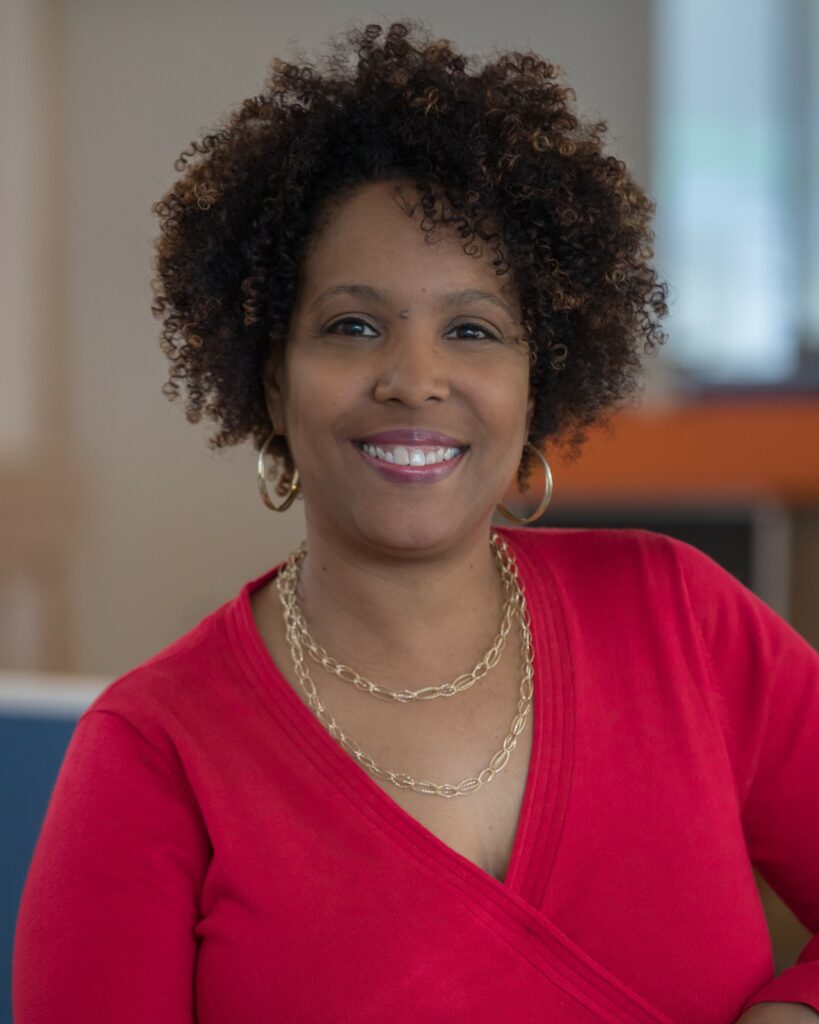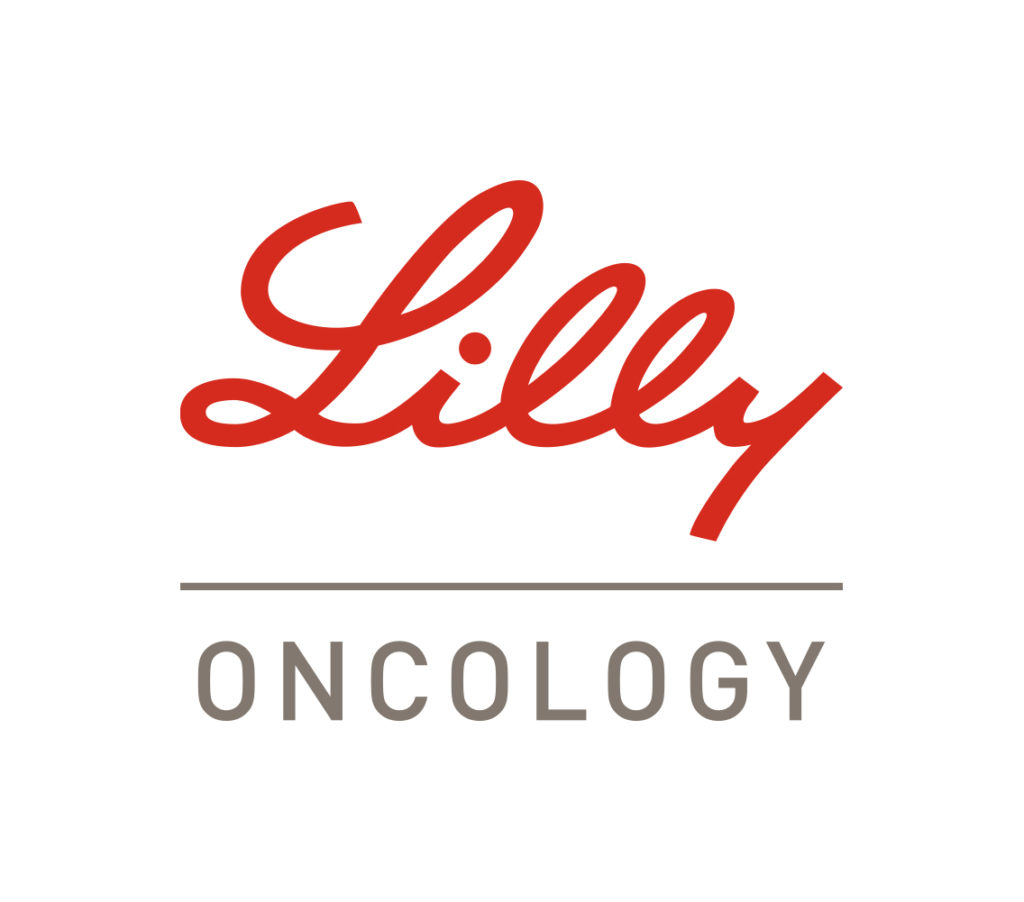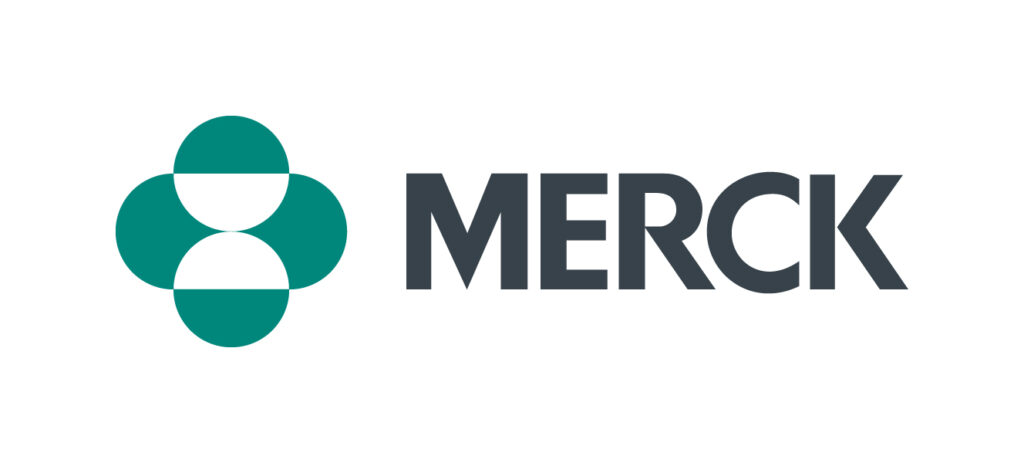Dr. Kim Johnson, Senior Director, African American Health Equity Initiative at Susan G. Komen, joins us in a two-part conversation about health equity and how we can address health disparities in our communities.
Meet Dr. Johnson

Dr. Kim M. Johnson is the Senior Director of the African American Health Equity Initiative at Susan G. Komen. The goal of the Initiative is to reduce disparities in breast cancer outcomes within the African-American community by 25%, starting in the 10 U.S. cities where the inequities are greatest, including Memphis, St. Louis, Atlanta, Chicago, Houston, Washington, D.C., VA Beach, Los Angeles, Philadelphia, and Dallas-Fort Worth.
Dr. Johnson brings more than 20 years of experience directing national health equity programs to improve the capacity of healthcare providers and community-based organizations to provide culturally competent prevention and treatment services and to improve health outcomes for communities of color. Prior to joining Komen, Dr. Johnson served as the Principal Investigator and Director at the National Minority AIDS Council (NMAC) where she led capacity building programs to improve health equity within communities of color nationwide. She has dedicated her career in healthcare and public health to effectively improve health outcomes of persons disproportionately impacted by disease by working to improve access to care and quality of care.
Since earning her bachelor’s degree from the University of Virginia and a doctorate degree from the Medical College of VA School of Medicine, Dr. Johnson completed a Family Medicine residency at the Pitt County Memorial Hospital in Greenville, NC where she specialized in minority health and women’s health. She has served as a healthcare consultant to several agencies within the US Department of Health and Human Services where she is recognized for developing high-quality, evidence-based public health programs targeting communities of color and resource-constrained populations.
Transcript
Shannon (00:00):
Support for this episode is brought to you by our partners, Eli Lilly and Merck.
Adam (00:06):
From Susan G Komen, this is Real Pink, a podcast exploring real stories, struggles, and triumphs related to breast cancer. We’re taking the conversation from the doctor’s office to your living room.
Adam (00:16):
Dr. Kim Johnson, Senior Director of African-American Health Equity Initiative at Susan G Komen joins us today in part two of our conversation about health equity and how we can address health disparities in our communities. In this episode, we discuss the drivers of inequities in the history of healthcare for black men and women in the United States. We also discussed social health determinants and how these can have a big impact on the care we receive. Dr. Johnson shares what we can do to make change today. Dr. Johnson, welcome back to the show.
Kim (00:50):
Thank you, Adam. It’s a pleasure to be here. Thanks for having me again.
Adam (00:54):
Well, I’m, I’m really excited, you know, last week was great. You helped us break down some key terms and terminology, and I really appreciate that for all of our listeners. If you’ve not listened to last week’s episode, please consider going back and listening to that, to prepare for what we’re going to talk about today. So let’s continue the conversation about health equity and health disparities. So my first question, what are the key drivers of racial health disparities?
Kim (01:20):
Yeah, thank you for asking, because this is so critical and foundational, and there are many drivers of racial health disparities, but if I were to prioritize them, I would absolutely have to say that systemic racism is one of the largest drivers or the greatest driver of these racial disparities that we’re seeing in health, especially in the black community, in addition, individual race or racial bias that stems from the systemic racism plays a critical part as well. There’s also disparities in the quality of cancer treatment and screening services such as genetic testing and counseling, and also a lack of diversity in clinical trials, as it relates to the black community and breast cancer. Other main drivers are racial disparities in general, especially in terms of oncology are really related to access to care, not quality of care, but access to care by this population. Genetics plays a role in this, but also disparities in health literacy and understanding of your health condition and being able to advocate for your own self in, in the black community as with several other communities of color, cultural beliefs and mistrust of the healthcare system.
Kim (02:39):
Do you play a role in driving these disparities? I would be remissed if I left out things like social economic status and educational levels, all play a role and then an individual’s own physical, mental health and lifestyle, including their weight, diet, and physical activity. What say though, Adam is, I want to get just to a word about this systemic racism, racism in general, because, because systemic racism, in my opinion is really the key driver. I want to just expand a little bit on what we’re talking about and what that is, especially as it relates to breast cancer, racism itself is a system and it’s a system that categorizes people based on their race or color, ethnicity, and culture to differentially allocate societal goods and resources in a way that unfairly disadvantages some while without merit also rewards others. And so as a system, and it really is a system.
Kim (03:43):
Racism has been institutionalized. It’s been institutionalized across this country and several institutions, including the health care system, but it plays out in a way that permits the establishment of patterns in policies and practices in organizations that consistently penalize and exploit people of color because of their race, because of their color and because of culture and ethnic origin, this racism that is a system affects attitudes and beliefs and behaviors of individuals towards other people, which is really called personally mediated racism, as well as it impacts how individuals think about themselves or perceive themselves, which is called internalized racism. So not only is it a driver of racial health disparities, and we’ve known that, but it really is a system and its systemic meaning is within institutions across this country, the health care institutions not excluded.
Adam (04:43):
Right. Well, and thank you for, for breaking that down. It’s a topic that is always interesting and difficult to broach, but it’s really important that we talk about these things and that we understand the, the depth of them and how they affect so many people on so many different levels. So, yeah. Thanks. Thank you for breaking that down in a way that makes it easy for us to talk about. I hope so. Okay. So what are some social determinants of health? Let’s let’s talk a little bit about that.
Kim (05:08):
Yeah. So by definition, social determinants of health are the nonmedical factors such as employment, income, housing, transportation, education childcare, you know, in the quality of places where people live, work, learn, play, and worship. These are things that contribute to disparities in health and healthcare. And these societal and economic and environmental and cultural determinants of health are really the terrain upon which structural inequities produce health inequities. So they play a large role in driving inequities or partnering, partnering with those disparities that already exist, where you live, how much you make, what social economic status you are, what class you are considered to be in all apart from what race you are and what your cultural background is. But all of these other determinants that we all are exposed to, that we all are a part of, but they really do provide the landscape if you will, for structural inequities that produce further health inequities
Adam (06:17):
And, and talk a little bit about how those social determinants of health have ha been highlighted during the COVID-19 pandemic.
Kim (06:25):
Yeah. So the pandemic has highlighted a lot. I tell you it’s highlighting structural racism, inequities, and they’re really being played out through the social determinants of health. So you would think in theory that COVID 19 would be an equal opportunity virus, by the way, it’s spread. You know, if you look at it, but the vulnerability of this virus is really unequal. And I’ll give you just a couple of examples to show what I’m talking about. For instance, black Americans, especially those who live in Southern States where Medicaid expansion has not occurred under the affordable care act or more likely to be uninsured. If not underinsured. In many instances, we’re more likely to work on lower paying jobs and more likely to suffer from diseases like heart disease, asthma cancer, and other conditions. And it’s not because of our biology. It’s really because of societal choices, such as things like where do our toxic dumps get cited and where do they, where are they in areas of the country?
Kim (07:35):
Where is it decided that new highways are built? Or where are lines drawn politically in States across this country where educational systems better in one area than in another, and where have black people historically permitted to live. If you look at the map, you’ll see racially and resource segregated communities that have decreased access to food. And there are food deserts in this very wealthy country that had environmental hazards that are really leading to comorbidities like diabetes and hypertension that really makes the black population more susceptible to COVID. So these are how one example of how those social determinants of health really play a role in propagating. If you will, you know, this particular pandemic, what another example is when you think about the pandemic itself and the CDC guidelines. So we all know we’ve heard the commercials, we’ve heard us surgeon general, and everybody talk about one of the most effective ways to reduce the spread of this infection is social distancing, right?
Kim (08:47):
Where your mass. But if we just look at social distancing alone for every other population that would mean working from home, if you could, right. Working from home is an issue of privilege in certain communities, these privileges are not accessible. So in the black community, especially having those structural educational opportunities and job opportunities that afford you to the privilege of being able to work from home or in many instances, not existence African-Americans this country really are in more of the front facing lower income under appreciated. It I’ll say part of the essential workforce as we call them. That’s not getting the full attention. That’s really required. They’re not getting the PPE that’s necessary and they don’t have the privilege to say, I can do my job at home. Whereas other populations, especially white population is more likely to be able to have that. So Adam, if you couple, the high burden of co-morbidities such as high blood pressure, diabetes and cancer layer on top of that, the role that social determinants of health plays, where are you the, how much money you make your ability to be employed? You know, all of that, but you subtract privilege. What does that lead to? It leads to increased vulnerability. Well, accident is country still must work in unsafe conditions where there is a limited availability for safe practices and what’s happening. The infection and death rates due to COVID complications are not surprising. They’re on the rise and they’re disproportionately affecting the black community. This should have been expected and it has been, but this is the price of inequity.
Adam (10:38):
Yeah. It’s tough. You know, I mean, hopefully it will open some eyes along as, especially as we’re talking about this right now, that’s the whole point of this podcast. So in light of that and opening eyes and making changes, what do we need to do to make a change?
Kim (10:54):
Yeah. And so all hope is not lost. You know, the picture is kind of bleak, but all hope is not lost. If we’re really willing to make a commitment to change any effective change requires of commitment. And when you look at the six fold increase in the rate of death for blacks in this community to COVID, you really have to feel like this is really unconscionable. So what we really need to do is look at the programs that we’re offering that address health disparities, especially those targeting the black community. Many of the programs that we have in public health are aimed at the patient rather than being aimed at the system. For instance, in breast cancer, there is a need to educate black women about their breast health, understanding their status, knowing their breasts, encouraging to have clinic, encouraging us to have clinical mammograms, a clinical exam, encouraging us to learn our family history and get genetic testing and counseling and advise them when needed.
Kim (12:02):
But if we do all of this and don’t address the system and we empower the black woman to know all about her health history and still send her to a broken healthcare system, we haven’t solved the problem. So like information about COVID-19 on prevention and mortalities and co-morbidity and testing is out there. You know, it’s out there for our consumption, but in many cases in areas where many African Americans live there are still is at least at the beginning of this pandemic and still in some cases, few testing sites. And sometimes if there is a testing site in those areas, it’s likely a drive-through testing site. You have to take into account systems. Things such as many people of color in some of the black communities may not have a car. And so we built a system when it is available, but we set up a barrier inherent into that system.
Kim (13:07):
And so there’s a barrier to testing even for COVID-19. So in a nutshell, my first recommendation is the interventions that we do are well-meaning activities and things we do. Can’t just be aimed at the patient. They have to be aimed at the system. I also want to say Adam, that racial health inequities that exist in breast cancer and also exist in code 19, really represent intersections on problems, these problems. So it’s across it’s across institutions, it’s across systems. We’re looking at challenges in health care challenges in public health challenges in the financial arena. I mean, it’s just, it goes non-stop and I’ve already talked about social determinants of health. So these intersection of problems require intersectional solutions, including addressing the social determinants of health that really aid in driving these disparities. One other thing I’ll say is really about the heart. It’s a matter of heart in fact, is that I’ve been raised really to show compassion.
Kim (14:19):
I think I went into health care wanting, you know, the grandiose idea. I just want to help people. You know, I look at, you know, this field as a privilege, but I also look at disease as the enemy, if you will, that it’s like it can be conquered. And if I did feel like that, I wouldn’t have signed up for this gig, you know, in healthcare and public health. But I really feel that we really have to show some genuine compassion. I can only speak for myself. Compassion really. In most instances, you think of it as suffering alongside someone or having empathy for someone who has a challenge that you may not have, but I would like to take it further and set her out. Audience compassion really has to mean that your feelings have prompted you to take action, to relieve the suffering of another person, not just to empathize dr. Martin Luther King said our lives begin to end the day. We become silent about the things that matter my feelings regarding how social injustice and systemic racism propagate racial health disparities has fueled me. They serve as the catalyst, my compassion for people, my Patriots disease and the way that tax people recklessly allows me to really speak up. But to also dedicate my time, my talents, and to give my heart to this cause to ensure that race cannot be the primary predictor of health for all people.
Adam (15:59):
Wow, Dr. Johnson, that’s, that’s profound and, and really, you know, this conversation reminds me of another one of my favorite dr. King quotes to paraphrase. He says, you know, darkness cannot drive out darkness. Only light can do that. And you’ve taken the time today to shed light on a lot of really important things. Do you have any, any final thoughts you’d like to share with our audience before we wrap up?
Kim (16:22):
Sure. First I’ll thank you again and for coming and for the opportunity to do the ping podcast, but I just want to say we’re really at a moment of ethical reckoning in this country, having conversations like this need to be elevated, they need to become more innovative and collaborative. We really need to dedicate resources specific to addressing racial health equity and in turn addressing breast health equity for communities that are desperately impacted by cancer, by breast cancer and other diseases. My concern is that while we are in the middle of this pandemic, that racial health equity as a topic is amplified on this topic. But what I really want to warn against is falling into collective apathy that while this is headlining the news, and it’s on all the newspapers, it’s everywhere and you keep seeing it. But I hope that in X number of months or X number of years, when this is no longer the leading story on CNN and that racial health inequities will still be an ongoing crisis and we’re still going to have to do something about it.
Kim (17:35):
We really have to demand changes in our health systems. And these are essential to really decreasing these disparities. The first step to this in any change process is acknowledging the change is necessary and naming what the problem is and not being fearful of calling it what it is, but after doing so we really have to take action and figure out what that action is in my humble opinion. And since I have the mic, I’ll get to say this recommends that healthcare systems and hospitals, institutions, and clinics adopt anti-racist policies, that advocate for individual conduct practices and policies that promote inclusiveness, interdependence, integration, and acknowledgement and respect for all racial and ethnic differences. I also believe that organizations can take an active approach dismantling racism in this country by taking a comprehensive, critical examination of their policies and procedures by empowering the development of diverse, formal, and informal leadership at all levels within their organizations.
Kim (19:01):
And then making a plan that increases accountability, demonstrates transparency and reorganize power. We add them, just have to see ourselves and our organizations as change agents. We need a commitment from all sectors of our society, government business, healthcare faith-based organizations, education, all sectors need to be involved in this. And we need all of us to work together to provide and prioritize racial health equity, especially for African-Americans in our country. I’ll end there because you want up. And I could go on for days about this topic, but I’ll end by saying, I thank you for your time. It is a matter of heart, but it’s also a matter of change and change really does start with each of us.
Adam (19:55):
That’s right. That’s right. Change starts with each of us and dr. Johnson. Thank you for being a change agent for coming on this show for defining terms, for opening our eyes to some powerful statistics, and for some ways that we can help move things forward in this country. Thank you.
Thanks for listening to Real Pink, a weekly podcast by Susan G Komen for more episodes, visit RealPink.komen.org for more on breast cancer, visit komen.org.
Sponsors

The More for MBC Facebook page is a Lilly-owned page that aims to provide people living with metastatic breast cancer a platform to engage.

Merck invents for life – our mission is to deliver innovations that extend and improve the lives of people with cancer.
